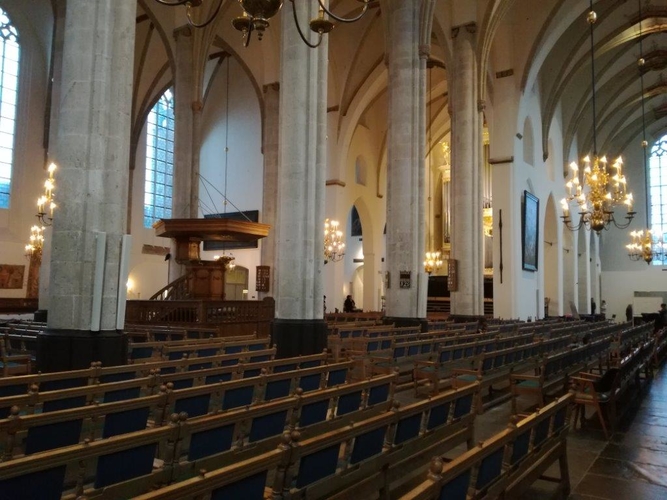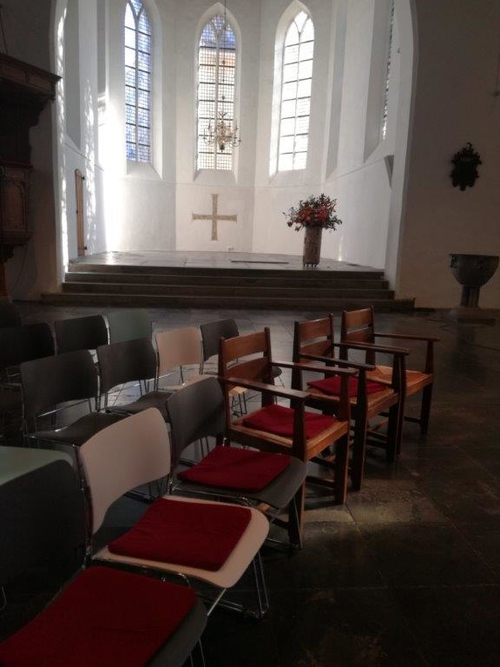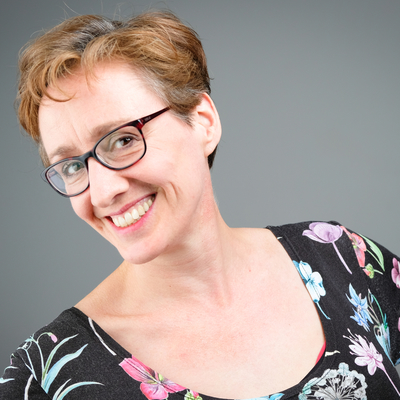In this post, I would like to introduce you to my research project about some multiple used church buildings in the Netherlands. As a result of secularization and changes in the religious landscape, a lot of church buildings cannot be kept by the local congregations. In many cases those church buildings are sold and given new purposes of all kinds. Some church buildings can be maintained by their congregation through opting for a shared use by several user groups. If the original religious community is one of these user groups, an interesting situation arises: the community needs to develop a new relation to their church building that is no longer entirely their own. The coming of other owners and other groups who claim and use the building from their own standpoints involve the necessity of making changes in the church building to accommodate their interests. Agreements and contracts with the new users arrange how the church building is kept fit for religious practices while its interior is adapted for other purposes as well. How do these arrangements work in practice? A church building seems to be a sensitive place which evokes emotions. Sensibilities arise especially with plural use, through which users are confronted with the presence of others. How do multiple used churches actually take shape and how do groups that use them relate to the building and each other? The core interest of my research is to study the dynamics of cohabitation.
The study takes as a starting point current theory in the material approach to religion and urban social studies. The four church buildings chosen for this study are city churches with a medieval origin. The ambition of my research is to avoid a solely human-centred approach. Instead I will take the church building seriously as having a biography and narrative of its own.
In most cases, in multiple used church buildings the interior is adapted, e.g. chairs replacing church pews, technical equipment, new heating systems and changes in the entrance, sanitary and kitchen parts of the church building. For the new purposes, new and specific attention is paid to the architecture and interior design. My research explores, through historical and ethnographic research, material changes in four church buildings in Amersfoort, Zwolle, Utrecht and Amsterdam where the full ownership is no longer in the hands of the local religious community.


The selected church buildings are: the Oude Kerk or Sint Nicolaaskerk in Amsterdam, the Geertekerk in Utrecht, the Sint Joriskerk in Amersfoort and the Grote or Sint Michaëlskerk in Zwolle. All four church buildings date back to the Middle Ages and have been built in a predominantly gothic style. They were designed for catholic service. As a result of the 16th century Reformation the church buildings came into protestant hands. The selected church buildings are also interesting because they date back to a time in which religious use of the building was not its only use and purpose. The interests of the municipal authorities, guilds, economic activities, military functions, burying of the death, et cetera, were part of the process of the construction (and almost permanent reconstruction) of the church buildings. To some extent, today’s multiple use of old church buildings resonates with previous broader functions.
Catholics and Protestants and their church buildings
Catholic church buildings are not part of this research as the catholic understanding of a church building does not permit multiple use of a church building. A church building is considered a sacred place assigned for Catholic worship. When a church building cannot be maintained for this purpose, it will be desecrated and then sold or demolished. An example can be found in the present Fatih Mosque in Amsterdam which had Jesuits and even socialists as its previous owners. The process of the several conversions of this building is described by Daan Beekers and Pooyan Tamimi Arab in “Gods huis in de steigers. Religieuze gebouwen in ontwikkeling.” (2017, 193-217). Most churches in the Netherlands forbid or discourage the conversion from church buildings into mosques nowadays.
Protestant theology and law does not have the notion of a church building as a sacred place and can hence share a church building with others. And yet, empirical studies show that the difference between Catholics and Protestants regarding what they feel to be sacred about a church, may not be as strict as is suggested in this distinction. However, in terms of church law, Protestants and Catholics are in different positions.
Why multiple used church buildings in cities?
Pre-reformation church buildings are very much part of the origin of cities. They reflect the basic social relations in the history of the city. Also more recent church buildings reflect social developments in their environment. But especially old church buildings are very much part of the interests of the municipality, reaching beyond the interest of a local parish or congregation. Church and state issues, laws and regulations, are all involved. The exterior of a church building proves to be meaningful to many citizens, also non-religious.
Observations: example
One issue already is the matter of visibility of present religious use of the church building apart from worship time. The Sint Joriskerk in Amersfoort quite obviously reflects current religious practices. The interior with the pulpit with open bible, the space around the pulpit with a solid baptism font and the whole lot of wooden benches is intact. There are always leaflets referring to the Sunday services, as well as to organ concerts. The hosting volunteers seem to be partly recruited from among the members of the local congregation. This latter fact might not be too obvious for all visitors.
The Oude Kerk in Amsterdam, when visited during the museum opening hours, does not directly reflect current religious practices. The wooden benches do not cover too much space. There are some around the central pillars and some that are part of the centre. There are no signs or traces of Sunday services. No hymnbooks, no leaflets, no half-burned candle. One could imagine that a church service can take place, but not that it necessarily does. In the audio tour (2016) a former pastor reflects on the building from his experience. In some presentations by the director of the Stichting Oude Kerk, the worshipping religious community is mentioned respectfully. Still, current religious use is far from obvious for a regular visitor of the Oude Kerk. When attending a church service on a Sunday morning, one can see that all liturgical items are collected for storage after the service in boxes.
In most multiple used church buildings, chairs are replacing the wooden benches. The room of a church is just not flexible with a lot of wooden benches for those who want something else than a protestant service.


Consequences of religious use?
In some respects continued religious use of a church building can be part of a promising option for multiple use of the building. For formal reasons: no new ‘destination plan’ for the building needs to be developed and approved by the city council. It may also safeguard that the interior, while improved with new financial investments, keeps the character of a church and thereby continues to relate to its primary functions as a church building.
From the perspective of project development it might be an obstacle to have continued religious use. It limits the possibilities to change the interior. From the perspective of cultural and religious heritage the evaluation might be more mixed.
The interaction between continued religious use and incoming new practices in reallocated churches can shed a light on changing ways in which religion is manifested in society in an era of unchurching.
Click here to read the Dutch version of this research introduction.

